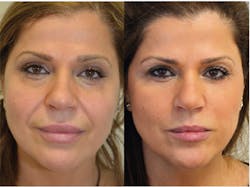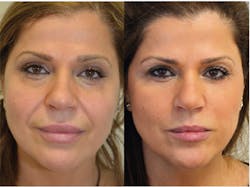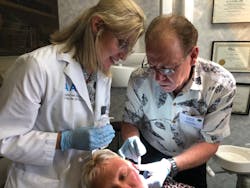The Numbers Lie
Louis Malcmacher, DDS, MAGD
Here are two quick questions for you: Is it a good time to be a dentist? Would you recommend this profession to someone you love? Let’s look at the numbers, which are so confusing, and try to get a sense of what the statistics are telling us about the dental profession:
According to the Bureau of Labor Statistics (BLS), the 2017 median pay for dentists was $158,120 (or $76.02 per hour), down from 2016’s median pay of $159,770 (or $76.81 an hour).1 Among specialists, such as oral and maxillofacial surgeons and orthodontists, the median pay was $208,000—the same as in 2016.2 This is confusing. The overall economy is booming, and unemployment rates are broadly at record lows, yet the median pay for dentists actually went down.
Dental school stats
Let’s look at dental schools and those brave souls who are entering the profession. According to the American Dental Association (ADA), there are currently 66 accredited dental schools in the United States.3 Predoctoral dental education programs enrolled 25,010 students during the 2017–2018 academic year, up from 24,677 in 2016–2017.3
For 2017–2018 students, the average first-year cost of dental school was $50,770 for state residents and $68,403 for nonresidents.3 If you have been in the dental profession for 10 years or more, you are probably wondering how today’s dental school graduates can afford dental school. According to Credible, these new dental professionals have the fourth highest monthly student loan debt-to-income ratio based on graduate degree, after optometrists, veterinarians, and physician assistants.4
Check out these statistics from Credible to see how dentistry compares to other health-care professions that have a high cost of education: Optometrists have a 14% monthly debt-to-income ratio with an average monthly loan payment of $1,369 and annual income of $110,000.4 Veterinarians have a 12.6% monthly debt-to-income ratio with an average monthly loan payment of $891 and annual income of $85,000.4 Physician assistants have a 11.6% monthly debt-to-income ratio with an average monthly loan payment of $964 payment and annual income of $100,000.4 Dentists have an 11.5% monthly debt-to-income ratio, an average monthly payment of $1,434, and an average annual income of $150,000.4 Finally, pharmacists have a 10.9% monthly debt-to-income ratio, an average monthly payment of $1,092, and an average annual income of $120,000.4 Of these professions, there is no question that the greatest opportunity is in dentistry.
Figure 1: A baby-boomer patient treated with Botox, fillers, and PDO threadlifts displays younger, better dentofacial esthetics
Growth in the profession
While income for dental professionals declined from 2016 to 2017, professional opportunities are improving. With 153,500 dentists employed in 2016, the BLS expects overall employment for dentists to grow by 29,300, or 19%, through 2026, which is faster than the average for all occupations.5
Where could this growth be coming from? The BLS attributes this growth to increased demand for dental services as the population ages.1 Baby boomers who want to look and feel great will keep more of their teeth as they age, and this trend will only grow for subsequent demographics, such as Gen X and millennials. As the needs of baby boomers grow, there also will be greater demand for more comprehensive treatment, including dental implants and elective esthetic treatment.
Want to see numbers that can grow your practice? Demand for nonsurgical injectables, such as Botox and dermal fillers, increased by 10% in 2016.6 No other dental procedure comes close to the year-over-year increase of these elective procedures. American Academy of Facial Esthetics members average an increase of $29,200 per month in production after one year of integrating Botox and fillers into their practices.
Figure 2: AAFE faculty Kristina Harvan, DDS, FAGD, mentors AAFE member Paul Poli, DMD, on a solid-filler PDO threadlift
Make the numbers lie
Here is where you can make these numbers lie—if you take control of your own destiny. With baby boomers living longer, wanting to look better, and having more disposable income, now is the time for you to start offering more elective esthetic treatments, such as whitening, veneers, Botox, dermal fillers, and solid-filler polydioxanone (PDO) threadlifts (figures 1 and 2). Don’t be a statistic like the numbers mentioned earlier in this column. Take control of your bottom line by expanding your practice to take advantage of this incredible economic boom.
References
1. Dentists: Summary. Bureau of Labor Statistics website. https://www.bls.gov/ooh/healthcare/dentists.htm#tab-1. Updated April 13, 2018. Accessed October 4, 2018.
2. Dentists: Pay. Bureau of Labor Statistics website. https://www.bls.gov/ooh/healthcare/dentists.htm#tab-5. Updated April 13, 2018. Accessed October 4, 2018.
3. American Dental Association Health Policy Institute. Education. American Dental Association website. https://www.ada.org/en/science-research/health-policy-institute/dental-statistics/education. Accessed October 4, 2018.
4. Which graduate degrees deliver more debt than income? Credible website. https://www.credible.com/blog/data-insights/graduate-degree-debt-income. Published April 10, 2018. Updated August 2, 2018. Accessed October 4, 2018.
5. Dentists: Job Outlook. Bureau of Labor Statistics website. https://www.bls.gov/ooh/healthcare/dentists.htm#tab-6. Updated April 13, 2018. Accessed October 4, 2018.
6. Quick facts: Highlights of the 2016 stats. The American Society for Aesthetic Plastic Surgery website. https://www.surgery.org/sites/default/files/2016-quick-facts.pdf. Published 2016. Accessed October 16, 2018.
Author’s note:
Go to facialesthetics.org to sign up for a free monthly e-newsletter or for information about live-patient Botox and dermal fillers training, PDO threadlifts, frontline TMJ and orofacial pain training, bruxism therapy, and dental sleep medicine.
Louis Malcmacher, DDS, MAGD, is a practicing general dentist and an internationally known lecturer and author. He is president of the American Academy of Facial Esthetics and serves as a consultant to STATDDS. Contact him at (800) 952-0521 or [email protected].


